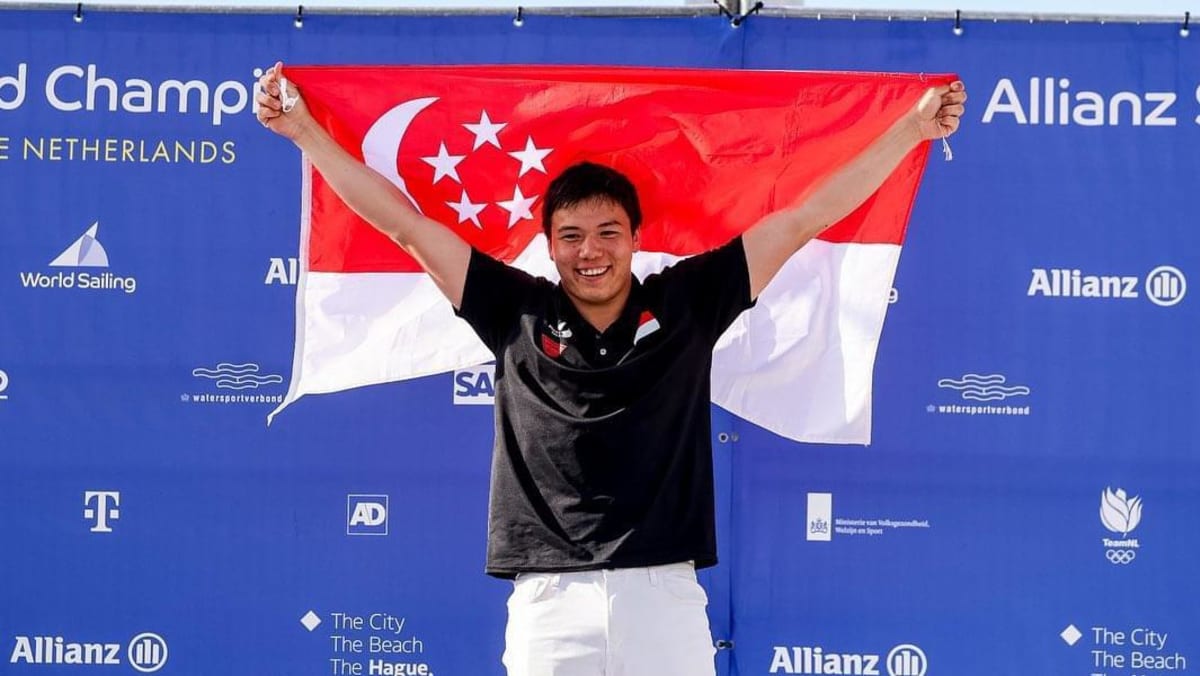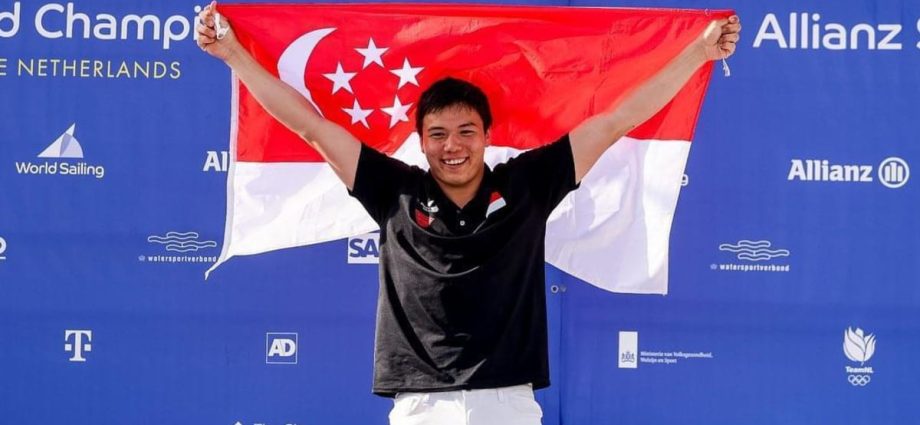
In kitefoiling, the board is lifted above the water by the hydrofoil, as compared to skimming across the water when kiteboarding.
Think of it as driving a car with a steering wheel locked versus driving a car without the steering wheel locked, said Maeder.
“Basically what foiling does is it unlocks your steering wheel – because before, you had to turn really hard to slightly go left or right, and you have to press really hard on the accelerator. But suddenly everything unlocks and you’re really free to use your car however you want,” he said.
“Compared to the normal board, where you’re hitting the waves and you’re constantly trying to fight to get upwind, you can go almost anywhere you want to with the foil in a much quicker time than you would on the twin-tip board.”
A competitor by nature, Maeder competed in ski races as a child, and recalled how he always wanted to race.
“It was in my opinion, quite natural (to do it competitively). I always wanted to race, I liked to race (for) as long as I can remember,” he added.
“I just tried it once or twice and it evolved naturally that I participated in competitions.”
AN “OVERWHELMING WAVE” OF HAPPINESS
Maeder, who is currently ranked seventh in the world, has not looked back since.
In July, he won his third consecutive title at the Formula Kite Youth World Championships and his performance at the Sailing World Championships also meant that he has confirmed a quota spot for Singapore at the 2024 Paris Olympics.
“It’s a relief almost that you didn’t do your work in vain. And, of course, an overwhelming wave of happiness. And very ecstatic almost,” said Maeder when asked about his victory in The Hague.
“It’s a higher level of competition (compared to the youth level), and so it requires a little more effort. And I guess just the fact that it was harder to achieve gives it more meaning to yourself if you achieve it.”

